
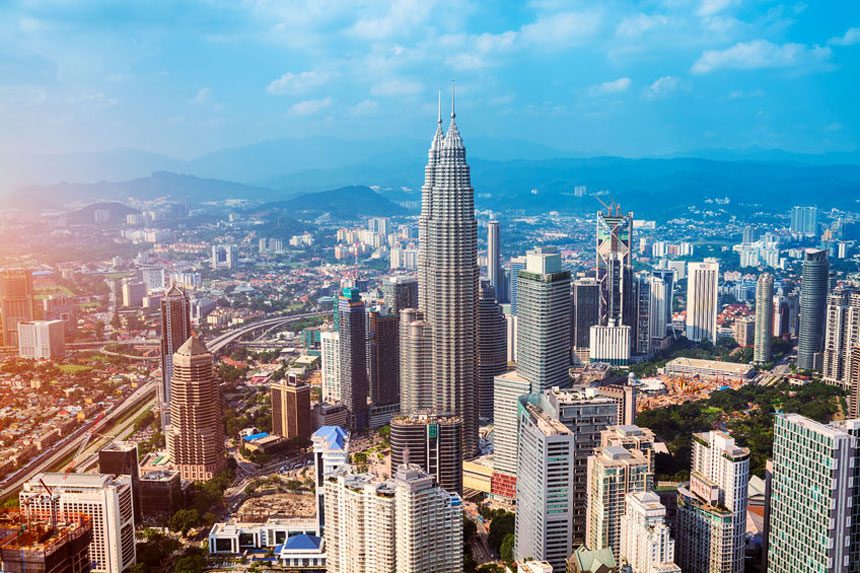 Image credit: fazon
Image credit: fazon Kuala Lumpur is considered as a green capital of Asia. It may have undergone rapid development in recent years yet still managed to retain its natural charm. Tree-lined streets, lush parks, and verdant hills live in harmony with skyscrapers and modern landmarks.
Most foreign visitors who come to Kuala Lumpur become enamored with the city, promising to return for another memorable trip.
One might ask, what is it about Kuala Lumpur that attracts all these travelers? This list of top 10 things to do in Kuala Lumpur could give you the answers. From shopping sprees and food trips to historical tours and eco-adventures, there is always something fun for everyone to do in Kuala Lumpur without breaking the budget.
Read on and start planning your trip to the capital of Malaysia, truly Asia!
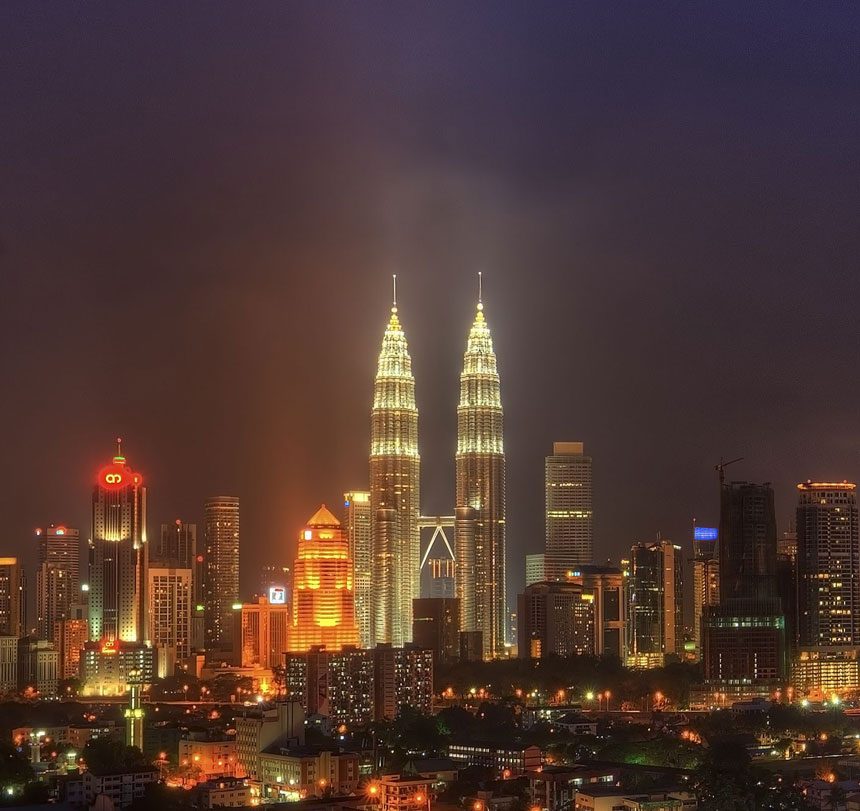 Image credit: andyjamil
Image credit: andyjamilWhat
The Petronas Twin Towers holds the record as the tallest twin buildings in the world. Officially opened in 1999, the twin towers are Kuala Lumpur’s most iconic and photographed structures.
Each tower has 88 storeys rising 452 metres above the ground. They were considered as the world’s tallest buildings from 1998 to 2004 until the completion of Taipei 101 in Taiwan.
Why
A trip to Kuala Lumpur is never complete without a visit to the Petronas Twin Towers.
Go up to the sky bridge on the 41st floor, the highest two-storey bridge in the world, where you can cross from one building to the other. Go even higher to the observation deck on the 86th floor and enjoy a panoramic view of the city.
For an added bonus, visit the towers in the afternoon to get a sunset view of Kuala Lumpur. Then, pick a good vantage point at the nearby park where you can marvel at the magnificent night view of the towers after sundown.
More activities near the towers
After touring the Petronas Twin Towers, you can go shopping at Suria KLCC, located at the feet of the towers. The mall has 320 retail shops, a wide variety of restaurants and cafes, cinemas, aquarium, art gallery, and a concert hall.
The KLCC Park offers a great exterior view of the Petronas Twin Towers. Its elevated bridge provides a good vantage point to take in both the park and the iconic buildings. It is great to relax by the Lake Symphony or go walking through the 1.3-kilometre foot and jogging path. Kids can have fun at the children’s playground.
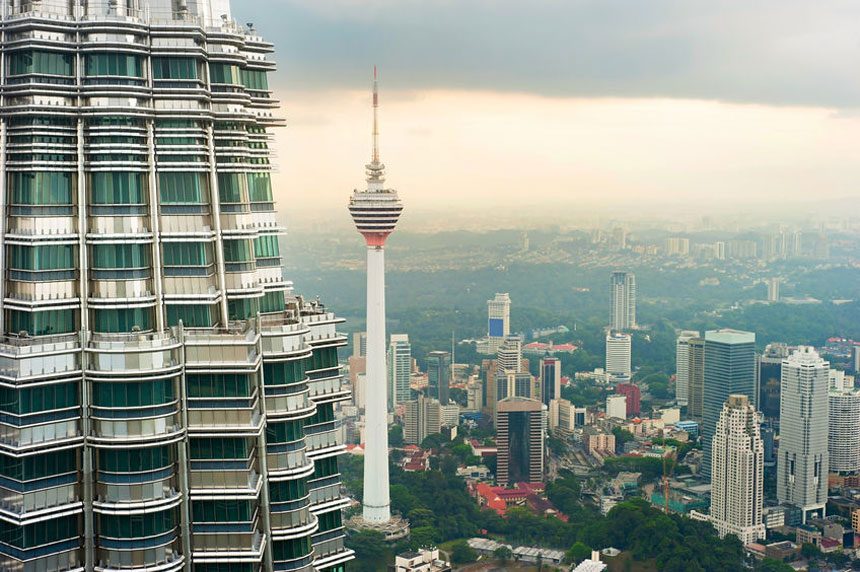 Image credit: tykhyi
Image credit: tykhyiWhat
The Menara Kuala Lumpur, also known as the Kuala Lumpur Tower, is a communications tower that stands at 421 metres. It is built atop the Bukit Nanas or Pineapple Hill, making it appear taller than the Petronas Twin Towers. Completed in 1995, the construction is ranked as the 7th tallest freestanding tower in the world.
The Menara Kuala Lumpur is a beautiful reflection of Malaysia’s Islamic heritage. Arabic scripts, Islamic tiles, and Islamic motifs are incorporated in the design details.
Along with the Petronas Twin Towers, the Menara Kuala Lumpur is one of Kuala Lumpur’s iconic structures that dominate the city skyline.
Why
The viewing deck of the Menara Kuala Lumpur is the highest observation deck in the city. At 276 metres above ground (370 metres above sea level), it offers an amazing 360-degree view of Kuala Lumpur.
From the main lobby, visitors can marvel at the sparkling glassed dome before taking a 54-second elevator ride to the observation deck.
Dine in the sky or explore the forest
Atmosphere 360 revolving restaurant is located one floor above the observation deck, which is the highest restaurant in Malaysia (282 metres above ground). It is an ideal venue for a romantic dinner – enjoying the nighttime view from different angles without ever leaving the table.
Nature lovers can opt to explore Kuala Lumpur’s only forest reserve, the Bukit Nanas Forest Reserve or Kuala Lumpur Forest Eco-Park, where the KL Tower is located at. The forest is home to several hundred years-old trees and tropical flora and fauna. Escape the hustle and bustle of the city and be one with nature there.
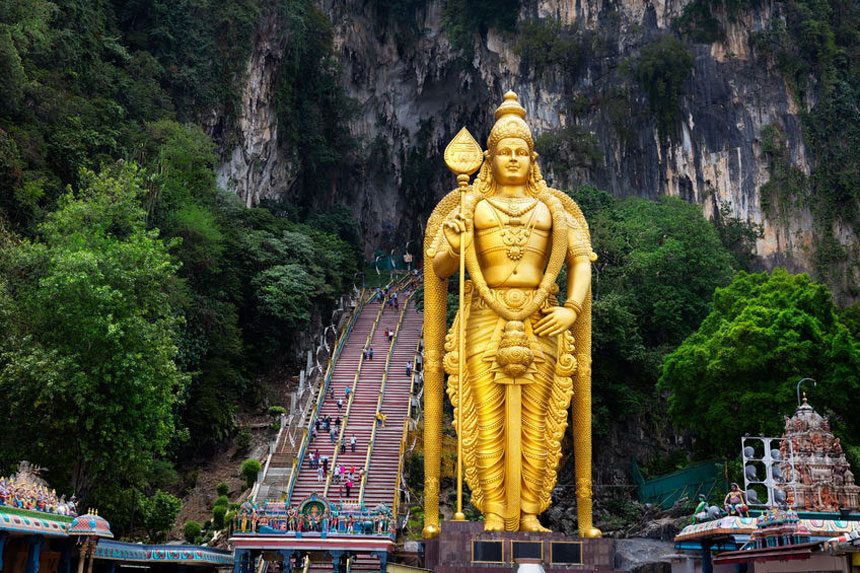 Image credit: krunja
Image credit: krunjaWhat
The Batu Caves is a labyrinth of limestone caves that are believed to be 400 million years old. It is located approximately 13 kilometres north of Kuala Lumpur and can be easily accessed by car, train or bus.
The Batu Caves has three main caves and several smaller caves that dot the entire complex.
This Malaysian landmark is also a significant Hindu shrine. It is dedicated to Lord Muragan whose 42-metre high golden statue greets every visitor at the entrance. Smaller statues are also built inside the caves, making the Batu Caves an important place of worship.
Every year from late January to early February, pilgrims flock to the caves for the annual Thaipusam Festival where they offer their “kavadis” to the Hindu gods.
Why
A visit to the Batu Caves is a welcome respite from the noise and traffic of the city. It is also a good opportunity to learn more about Hinduism and appreciate the artistry of Hindu shrines and statues.
Climb up 272 steps to get to the main cave which is the Temple Cave or Cathedral Cave. Once inside, you will be amazed by the spacious interior with its 100-metre high ceiling and ornate shrines. Sunlight streams from a few holes on the ceiling, offering a glimpse of the bright blue Malaysian sky from the darkness of the cave.
Get some adventure and learning via a guided tour at the Dark Cave. This bat-filled cave is also home to interesting harmless cave creatures. Just stick to the tour path and marvel at the amazing stalactite and stalagmite formations. If you feel more adventurous, take the extended Dark Cave Adventure Tour and explore the darkest parts of the cave through the Crawl Passage.
If you don’t feel like sweating out from step-climbing or seeing creepy crawlies, opt for the Cave Villa, also known as Art Gallery and Museum Cave, situated at the bottom of the steps. Inside the caves are statues and paintings that reflect Hindu heritage. You can also delight in the koi fish and tortoises at the pond inside the cave.
Visitors’ notes
The Batu Caves is a place of worship so avoid wearing skimpy clothes. Entrance to the Temple Cave is free while the other caves can be accessed for a small fee.
Macaque monkeys abound in the area so keep a watchful eye and be careful with your belongings. These monkeys tend to grab anything that they desire especially plastic bags which could contain food items.
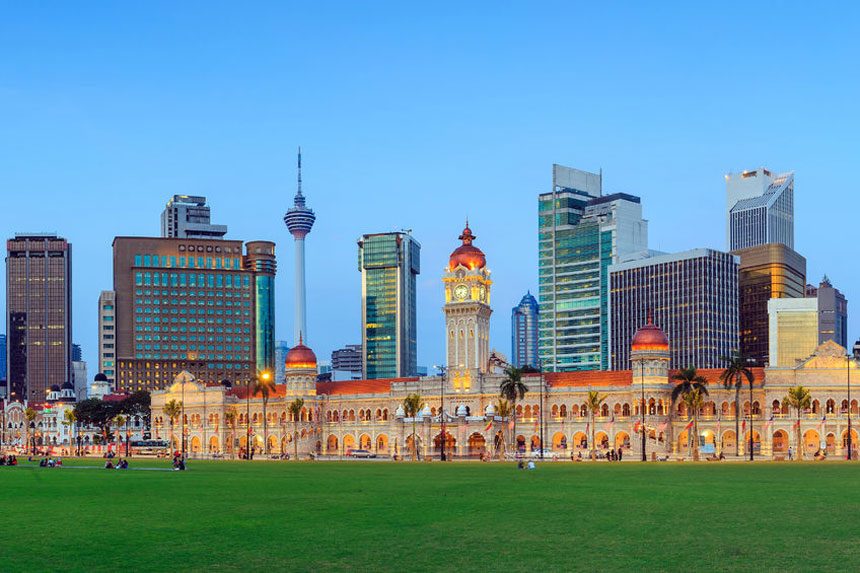 Image credit: f11photo
Image credit: f11photoWhat
Merdeka Square is the site of the first hoisting of the Malaysian flag in 1957. The significant event is commemorated through a 95-metre flagpole, one of the tallest in the world, located at the south side of the square.
The square mainly consists of a large patch of green field surrounded by buildings, dating back to the 1890s. The most notable structures around the square are the Sultan Abdul Samad Building and the Royal Selangor Club.
Merdeka Square literally means Independence Square. This historical landmark hosts the annual National Day Parade.
Why
The Merdeka Square is a free and open space where everybody can relax and bide their time after touring other parts of Kuala Lumpur. Families can have picnics at the grassy field where children will enjoy running and playing.
Aside from its history, the Merdeka Square is definitely worth a visit if only to marvel at the gorgeously amazing architecture of the surrounding buildings. There are the grand Sultan Abdul Samad Building and its clock tower, the Tudor-inspired Royal Selangor Club, the enormous Masjid Jamek mosque, and the Moorish City Theater.
Explore the square in the afternoon and linger after sundown to watch the buildings transforming with beautiful colored lights.
Things to do at Merdeka Square
Take a free 2.5 hours guided tour courtesy of the Mayor’s Office. The tour happens thrice weekly, from 09:00 to 11:30. Just walk in and register at the City Gallery before 09:00 on Mondays, Wednesdays, and Saturdays.
Visit the Kuala Lumpur City Gallery and view the miniature models of Kuala Lumpur and its famous landmarks. A 40 feet x 50 feet scale model of cityscape can be found inside the gallery.
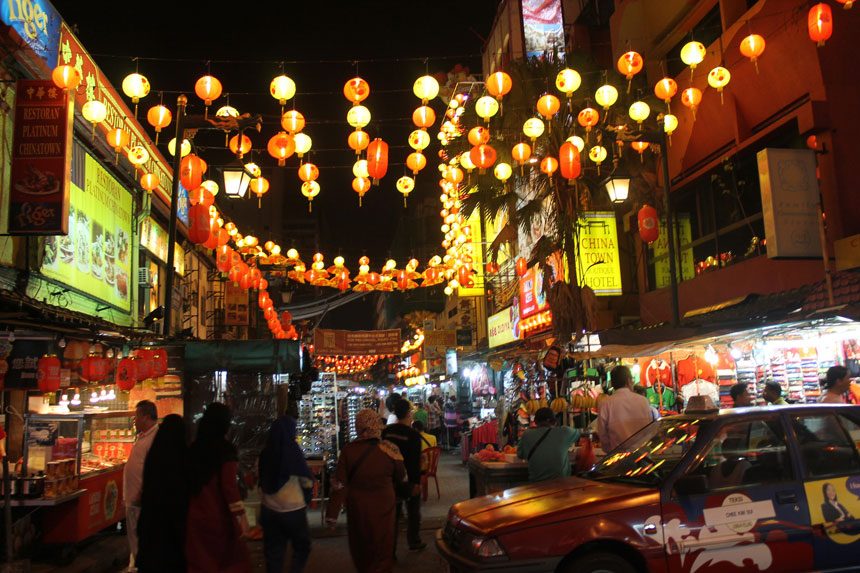 Image credit: Connie Ma/Flickr
Image credit: Connie Ma/FlickrWhat
The Chinatown in Kuala Lumpur is equally fascinating as any Chinatown in the world. This bustling hub around Petaling Street is also known as “Chee Cheong Kai” or Starch Factory Street, owing to its history as a district for tapioca production.
These days, it is a bargain hunter’s paradise. Shoppers flock to this famous marketplace for good deals on clothes, accessories, souvenirs, fabrics, and electronics.
Just a word of caution, buyers must beware of knockoff items that abound in this part of the city. To be on the safe side, opt for the unbranded but high quality products, available at numerous retail shops.
Why
A wide variety of goods at cheap prices. Rates can even go lower if you haggle with the vendors.
When the sun goes down, Chinatown transforms into a vibrant market filled with food stalls and lively entertainment.
A visit to Chinatown is the best way to immerse in the market shopping culture of Kuala Lumpur. The place is named Chinatown, but it is actually a melting pot of vendors and shoppers of various races, from Chinese to Malay, Indian and Bangladeshi.
Best shopping places in Kuala Lumpur Chinatown
Petaling Street is where the main action happens. Explore the retail stalls and haggle your way with the vendors to get the best prices for your purchases. Sample the popular street food such as Hokkien noodles and asam laksa.
The Central Market is just a short walk from Petaling Street. It offers a similar shopping experience but with a more artsy vibe. The place is particularly famous for high quality yet low priced handicrafts, souvenirs and art works.
Kasturi Walk or Malaysian Heritage Walk runs beside the Central Market. This covered walkway is lined with stalls selling Malaysian crafts, souvenirs, local food, and knockoffs. Shop there if you wish to buy cheap goods minus the crowd and noise of Petaling Street.
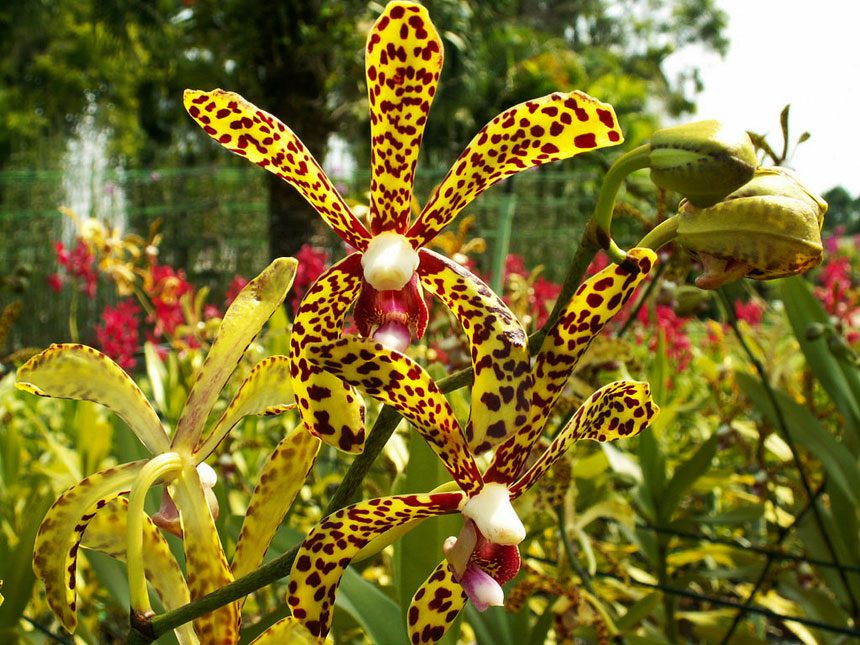 Image credit: Conny Sandland/Flickr
Image credit: Conny Sandland/FlickrWhat
The Lake Gardens, also known as Perdana Botanical Gardens, is a lush 91.6-hectare park right in the heart of Kuala Lumpur. It was established in 1888 and built around a lake. This lush garden used to house the official residence of the representative of the British government. The Malaysian Houses of Parliament is also located at the northern side of the park.
Other attractions inside the sprawling Lake Gardens include the Kuala Lumpur Butterfly Park, the National Monument, the Hibiscus Garden, the Orchid Garden, and the deer park.
Why
The Lake Gardens offers a peaceful stop for visitors and city dwellers alike. A moment without the city’s noise and traffic is precious to commune with nature amid the verdant greenery.
Nature lovers will find their cup of tea in watching stunning trees and flowers. Lovely animal friends like butterflies and dears will add more excitement to the experience.
Free guided walking tours are held at the park on weekday mornings, from 08:00 to 10:00.
Places of interest at the Lake Gardens
Visit the Topiary Collection, one of the focal points of the park that is worth exploring. It is located right beside the lake and offers a scenic sanctuary for nature lovers. Health buffs can jog or walk around the lake while families can have a picnic amid the lush greenery.
If you want more flora, then head towards the Orchid Garden and check out the 800 orchid species. Entry is free on weekdays and at RM1 ($0.25) on Saturdays, Sundays, and public holidays. Visit the weekend orchid bazaar to take home a rare orchid at a great bargain.
The Butterfly Park is another top attraction. Its more than 5,000 live butterflies are a captivating draw. Young scientists can learn more about conservation and propagation at the nursery and breeding area.
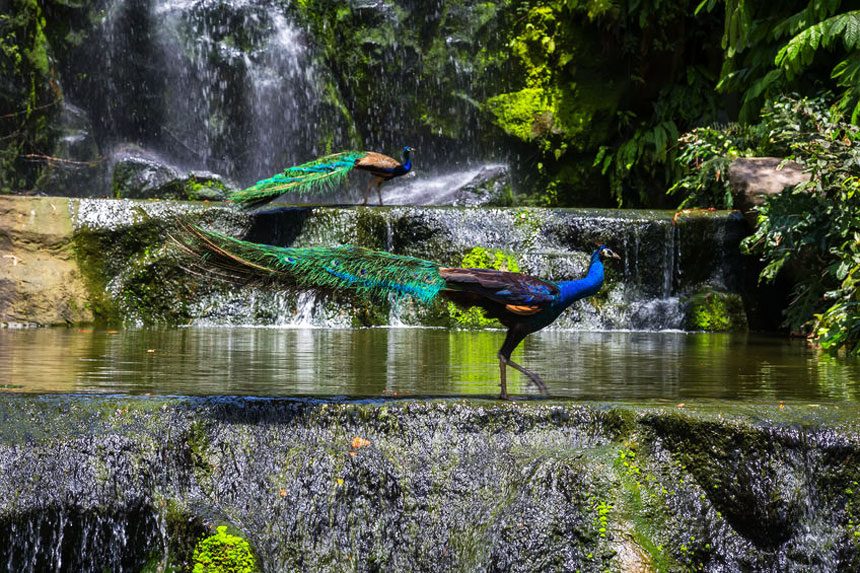 Image credit: aiisha5
Image credit: aiisha5 What
The Kuala Lumpur Bird Park is home to over 3,000 birds from 200 species of local and foreign varieties. It is divided into various zones, including free flight area, Hornbills Park, and a section with separate cages and mini aviaries.
This bird park is located at the northeastern fringe of the Perdana Botanical Garden, occupying 8.5 hectares of the total area. Three out of four zones of the park are designed to imitate the birds’ natural habitat, providing visitors a glimpse of life in the wild with the birds.
Why
It is always fun to interact with birds, especially the talking species. And there is no better place to do that than in the world’s largest walk-in free-flight aviary. Young and old can talk to a parrot, feed parakeets, or pose with an owl.
The bird park is built in such a way that helps the birds feel free from being caged. And helps visitors feel like being in a tropical rainforest with thousands of birds flying around.
Main attractions at the Kuala Lumpur Bird Park
The walk-in aviary is where most of the excitement happens. Be mesmerized by the beauty of the Indian Blue Peacock with its magnificent 5-foot train. Get an impression of the world’s largest pigeon species, the Crowned Pigeon, which grows as large as a turkey. Witness Yellow-Billed Storks gathering twigs and building their nests. Free-flight Bird Feeding is done daily at 10:30.
Watch sunbathing pink flamingos at the Flamingo Pond and be amazed at how these lovely birds can stand with only one leg. The scenic pond contains a man-made waterfall, which provides a perfect backdrop for great photos with the flamingos and other wading birds.
Experience a true Malaysian tropical forest setting at the Hornbill Park. This mini aviary houses one of the world’s largest hornbill species, the Rhinoceros Hornbill. You can opt to just sip coffee at the verandah of the Hornbill Restaurant and Café while enjoying a high angle view of the park. Hornbill feeding is done daily at 11:30.
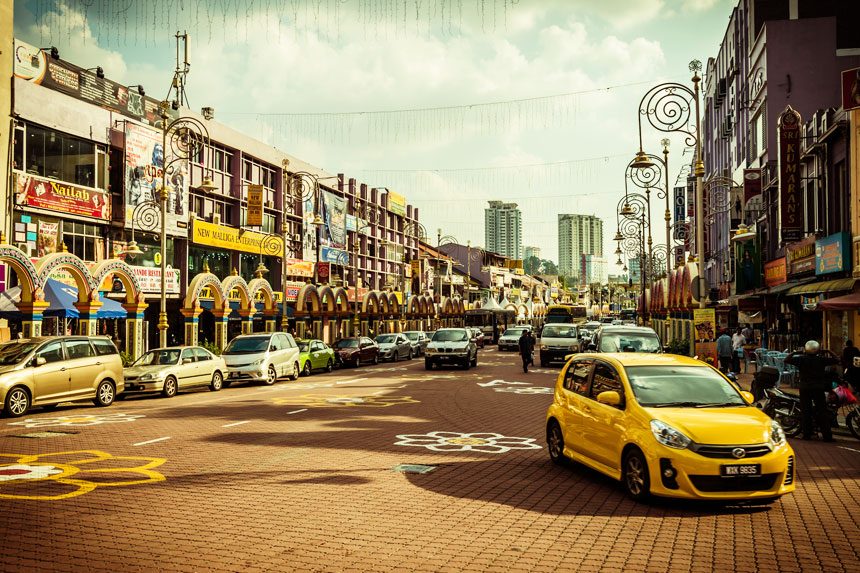 Image credit: Alexander Synaptic/Flickr
Image credit: Alexander Synaptic/FlickrWhat
Little India of Kuala Lumpur was originally located at Jalan Tunku Abdul Rahman in central Kuala Lumpur. In 2009, it moved to the present location, spanning Jalan Travers to Jalan Tun Sambathan.
The new Little India is a medium-sized township occupied by a sizable Indian community. From being a quiet neighborhood, the area is fast becoming a commercial district, busy with the trading of Indian food, groceries, textiles, and spices.
Why
Indian life is a colorful part of Malaysian culture. Once you arrive at the area, you may forget that you are actually in Malaysia, at least for a moment.
A trip to Little India is the perfect way to immerse in Indian culture and lifestyle.
Best things to do in Little India
Shopping is one of the main activities in Little India. Locals and tourists flock there to buy Indian goods such as saris, spices, Bollywood CDs and DVDs, floral leis and gold jewelry. Don’t forget to haggle for getting the best buys.
It goes without saying that Little India is famous for Indian cuisine. Restaurants and food stalls line the main street, luring people with appealing dishes like samosa, vadai, thosai, and ghulab jamun. The popular banana leaf rice is a must-try.
Take a walking tour once you’re done with shopping and dining. Marvel at the brightly colored buildings and arches amid the blare of Bollywood music. Take out your camera and have a selfie at the Elephant Fountain. Stay on after dark and admire the dancing water of the beautifully illuminated fountain.
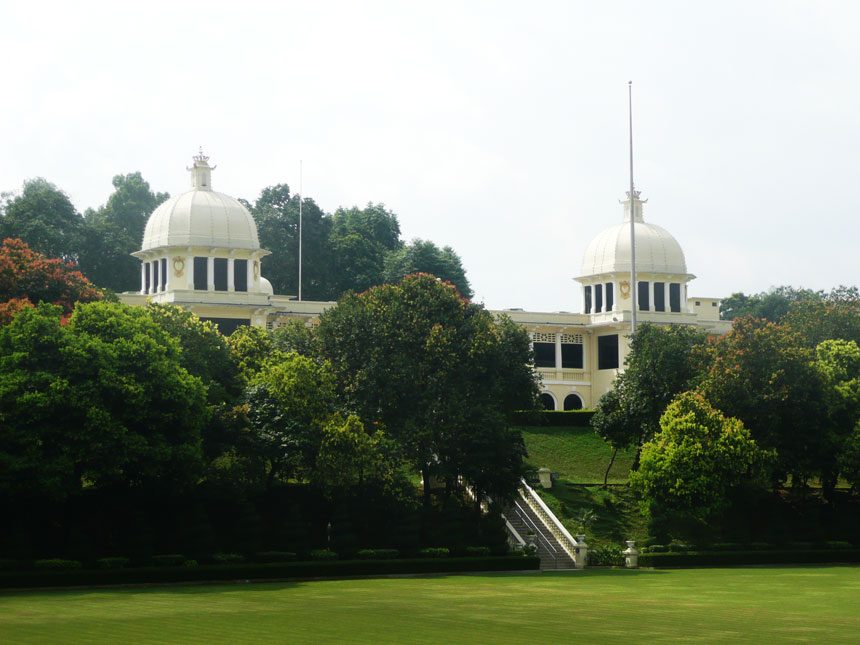 Image credit: Gryffindor/Wikimedia Commons
Image credit: Gryffindor/Wikimedia CommonsWhat
The Royal Museum in Kuala Lumpur is situated at the former National Palace of Malaysia. It stands on an 11-hectare land of the Bukit Petaling Hill, overlooking the Klang River.
This former residence of the King and Queen has a long history, dating back to 1928 – the year it was built as a mansion owned by a Chinese millionaire. It later served as the residence of the Japanese Governor during World War II. After Malaysia gained merdeka or independence in 1957, the palace was renovated to become the official residence of His Majesty the Sultan of Selangor.
The palace has since been converted into the Royal Museum after the new National Palace was built on Duta Road. It was formally opened to the public in 2013.
Why
It is a rare opportunity to enter a palace and get a glimpse of royal living. This is what the Royal Museum offers as we explore the palace and see the royal memorabilia on display.
From the main gate, we can already marvel at the grandeur of the place with its golden flower details. The main gate itself is a popular background for picture taking.
Just like in Buckingham Palace, the changing of the guard ceremony is fascinating to watch, which happens at noontime (12:00pm).
Most interestingly, we are allowed to spend time at the former royal quarters, which was forbidden to non-members of the royal family.
Visitors’ notes
Guided tours are conducted daily at the Royal Museum. Visitors are not allowed to wander around the palace grounds so stick to the tour itinerary. Photo taking can only be done at the Throne Room. It is prohibited in all the other sections of the museum. Entrance fee is RM5 ($1.23) for locals and RM10 ($2.46) for foreigners.
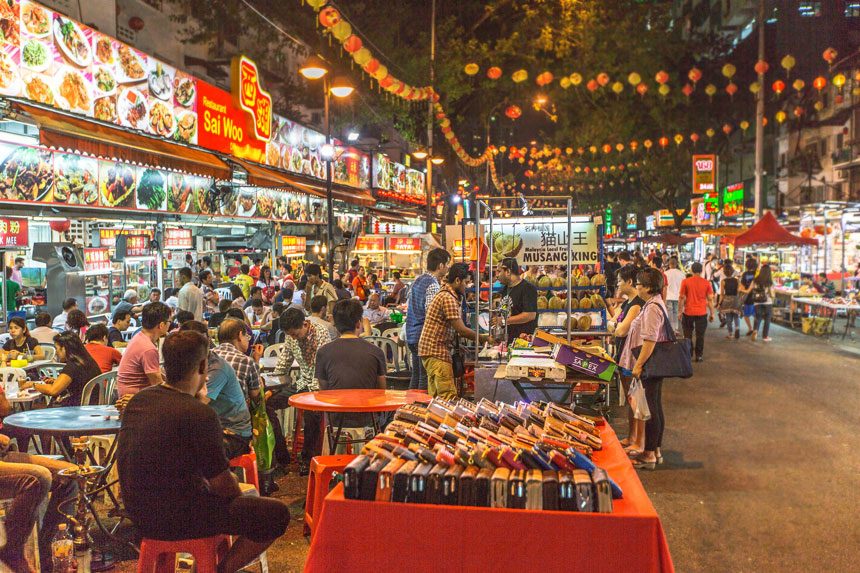 Image credit: IQRemix/Flickr
Image credit: IQRemix/FlickrWhat
Jalan Alor captures people’s hearts with its beautiful selection of authentic local dishes.
Hawker stalls abound in this famous street with vendors calling out to potential customers. There are also a number of air-conditioned restaurants that specialize in seafood fare and Chinese cuisine.
Jalan Alor may be not much by day but when the sun goes down, the whole place transforms into a lively food paradise.
Why
Jalan Alor features the cheapest and tastiest food options for everyone. There is a wide variety of Malay, Chinese, and Thai dishes for us to satisfy our taste buds. The food selection there is a beautiful reflection of the cultural mix in Malaysia.
This food mecca is also a good venue for a budget-friendly night out. Go people watching or enjoy a few laughs with friends over beer and barbecue.
Best foods to try at Jalan Alor
The best BBQ chicken wings can only be found at Jalan Alor’s most famous hawker stall, Wong Ah Wah. The place has grown from one humble stall to the current five stalls in a row!
Fresh seafood at Meng Kee is another crowd favorite. Try out their spicy grilled fish, grilled stuffed tofu and belacan fried rice.
If you want to go adventurous, sample some exotic fare like frog porridge and durian.
Don’t be limited with these food suggestions. Go ahead and explore this food street and taste anything that catches your fancy. Who knows? You just might reach your gastronomic nirvana at Jalan Alor in Kuala Lumpur.